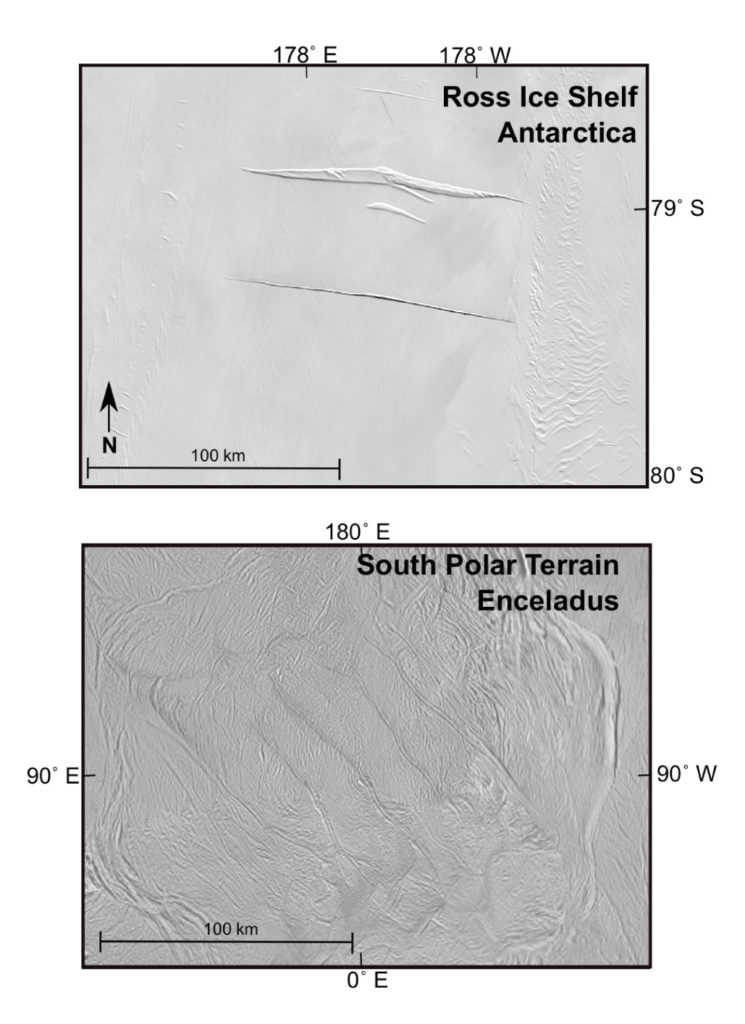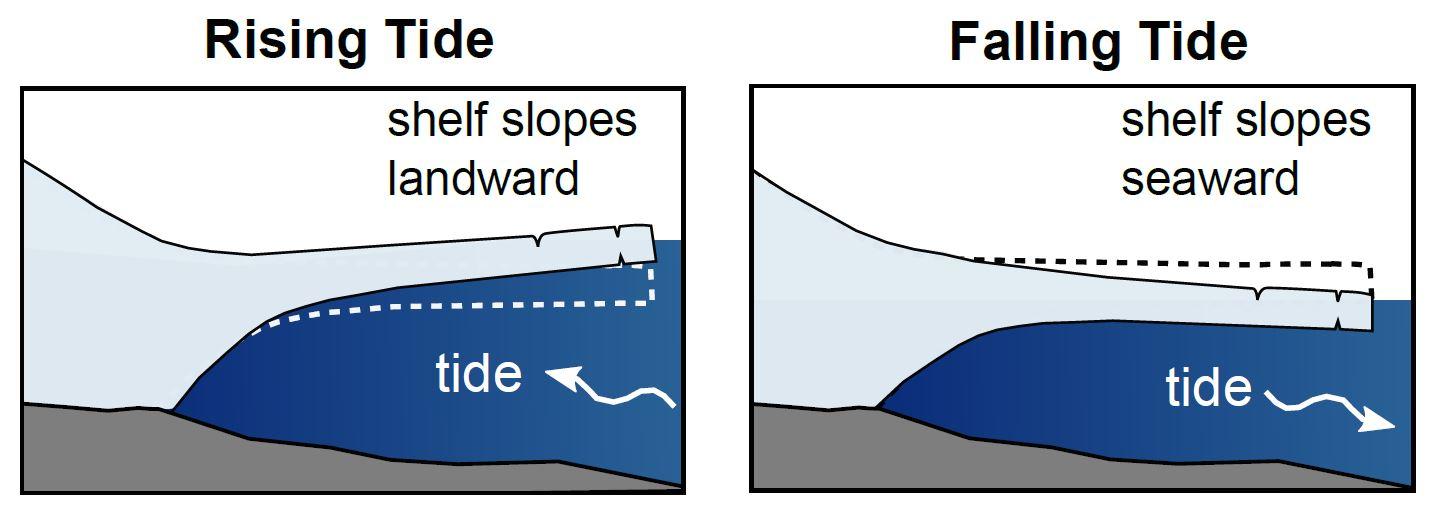Enceladus: Be careful when walking on ice
Anyone landing on Saturn’s icy moon Enceladus, for example to explore the ocean at its depth, had better be careful: Ice quakes could be part of everyday life on the surface of the 500-kilometer-diameter moon. Researchers are drawing attention to this in a new study.
The culprit is the massive tidal forces caused by Saturn and the planet’s other, larger moons – much like the moon on Earth. These tidal movements, on the plus side, warm its interior so that life could possibly arise there. But they also cause the surface to crack, sometimes pushing large geysers of water vapor through conspicuous cracks called tiger-strip fractures. This allowed the Cassini spacecraft, for example, to study the composition of the ocean.
The new study now uses observations of Antarctic ice shelves to deduce that tides on Enceladus can also cause small quakes in the ice at the moon’s fractures, similar to ice quakes observed on Antarctica’s floating ice sheets. “We have ideas about how thick the ice might be, but we have no direct observations. Studying ice quakes is one way to get that information,” says Kira Olsen, a geophysicist at NASA’s Goddard Space Flight Center
To learn more about how Enceladus’ tiger crevasses might move, Olsen and her colleagues turned to floating ice shelves in Antarctica, the closest analog on Earth for the type of activity. The researchers analyzed data collected by seismometers along the Ross Ice Shelf in the southern continent between 2014 and 2016 and compared it to satellite images of the area. They paid particular attention to two seismometers placed near large cracks on the ice sheet. Most icequakes occurred in the Ross Ice Shelf when the cracks were pulled apart, meaning the tides were falling.
The researchers then created models of the types of fractures they saw on Enceladus’ surface. These models showed that the greatest seismic activity on Enceladus is likely synchronized with the tides. The peak of seismic activity occurs when Enceladus is 100 degrees past its closest approach to Saturn in its orbit. At this time, the ocean beneath the ice behaves much like water in a sloshing balloon. The ice fractures occur at the points of highest stress where the balloon would break apart.
However, the ice quakes along these cracks are not particularly strong, even at the stress peaks. Olsen describes them more as “almost continuous small pops and breaks.” So future visitors shouldn’t be surprised if the ice is constantly cracking beneath them. Since there’s no real atmosphere, they’ll only hear it anyway if they put their ear to the surface.

